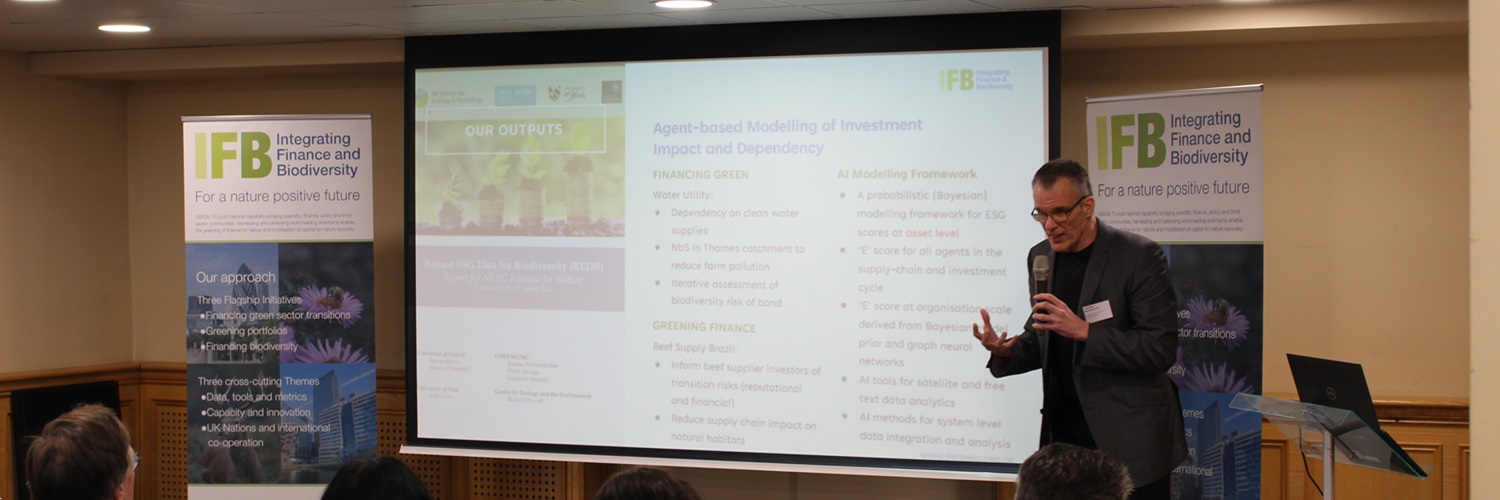The joint Integrating Finance and Biodiversity and Economics of Biodiversity Conference 2024 was held in Nottingham.
The first day included presentations from all 12 IFB Phase I pilot projects. In the first of a four-part series, we provide overviews of the first three. Presentations 4 - 6, Presentations 7 - 9, and Presentations 10 - 12 are also available.

Franziska Schrodt presenting Co-creating and applying a theory of change for biodiversity credits - towards a nature-positive future
Robust ESG for biodiversity – Dr Steven Reece, University of Oxford
Steven explained how his AI team, in collaboration with the Oxford University Sustainable Finance group, the UNEP World Conservation Monitoring Centre, UKCEH, and the Satellite Applications Catapult are exploring innovative solutions to overcome existing challenges of ESG disclosure and analytics for biodiversity by tapping into the space of ‘discoverable data’ (e.g. satellite data, disclosures, traditional and social media, Internet of Things, and in situ sensors).
The work has delivered a model that integrates finance, nature and AI for two use-cases in green finance and financing green. The model facilitates multi-disciplinary collaboration, and encourages constructive engagement and feedback from ESG data providers, financial institutions (banks and asset managers), NGOs, economic modellers and representatives from the Taskforce on Nature-related Financial Disclosures.
Reducing commodity-driven deforestation - Dr Jonathan Green
Poor Jonathan was stranded on Arran due to the storms that coincided with the conference. Fortunately he was able to record a presentation in which he told delegates of how the project had produced the first ever map of rubber-driven forest loss. This was published in Nature and Conservation Letters, and generated significant media attention.
Using the latest satellite technology and cloud computing, and a review of more than 100 case studies, the work reveals that the loss is significantly larger than previous estimates, which have been widely used to inform policy.
A bespoke app is also now available that allows stakeholders to browse and graph commodity and deforestation data for rubber, and has the functionality to add further layers.
Co-creating and applying a theory of change for biodiversity credits - Dr Franziska Schrodt
Franzi reported that as a result of the pilot project, both she and a Co-Investigator are now on the Biodiversity Credit Alliance (BCS) Task Force and the International Advisory Panel on Biodiversity Credits (IAPB). They use these positions to link academia with the financial sector, biodiversity credit sellers, knowledge/data providers, and Indigenous Peoples and Local Communities.
At the World Economic Forum they took advantage of key players being together in Davos to organise a workshop, the results of which will be published soon and will influence the design a larger international Theory of Change.
Phase II will include the approach taken in medical implementation science to recruit “patient” researchers from amongst stakeholder groups to guide and inform the work and help to design effective workshops.
Members of BCA and IAPB will help to design a sandpit environment to allow actors safe testing of new approaches and frameworks.
